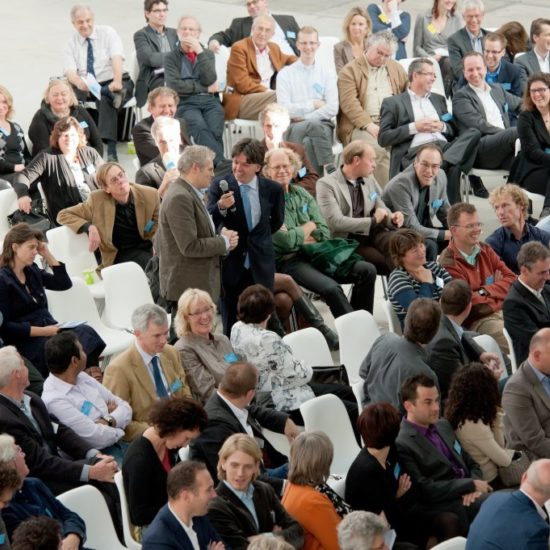The focus of the programme was an issue the school had been struggling with for ten years: the current headscarf ban. Underneath this was the broader question of how the Catholic values of the school relate to a changing, diverse and inclusive society.
The rector said: "I want an inclusive school for everyone. That ban is off the table, otherwise I'm out of here." To this, some homosexual teachers said, "Inclusiveness also applies to us. If that ban goes, we won't feel safe and we'll leave."
Basti and Wendelien chose the path of gradual change, whereby a number of carefully chosen steps would create the right conditions for the headscarf discussion.
The work format 'crossing the line' first of all gave everyone insight into their own identity: "Who am I as a person, as a teacher and as a religious person?" After a short walk, the participants shared their identity in a number of speed dates, which provided insight into each other's choices and considerations. A number of group formations answered the question "which rituals should the school keep and which should be abolished; and why?".
With the insights gained, the group was ready for the main issue of the day: a - broadly supported - decision on the headscarf ban at school. Moderators Basti and Wendelien looked for an outcome that all participants could agree on, without winners or losers, based on the principles of Deep Democracy.
In practice, democracy is often about the majority deciding something at the expense of the minority. The wishes and wisdom of the losers are not acted upon: you lost, so the trees are cut down, the windmills are placed, the cuts are made, and so on.
In order to avoid the feeling of winners and losers, Basti and Wendelien first took the time to get all perspectives on the table. Those of the rector, the homosexual teachers and all voices in between. Those of the people present and also those who could not, did not want to or did not dare to attend.
This started already in the preparations. Colleagues who would be absent were phoned and e-mailed to ensure that their perspectives could be included. These opinions were brought in by means of an empty chair. On that chair, participants verbalised the points of view of absentees. In this way, everyone put themselves in the place of the feelings, frustrations and language of the others.
Only when all these perspectives were on the table, the step towards a solution was taken. The rector was asked time and again to rephrase the decision, until everyone felt that all voices had been heard.
In the end, our moderators did lead the group to a majority decision. The difference with other decision-making processes was that they took great pains to use the wisdom of the minority to enrich the decision of the majority.
At this school, all those present eventually agreed with the outcome; even if it was not their preferred decision. The minority could also say 'yes' to the decision, subject to some conditions that met their wishes.
All voices were heard. All voices were taken seriously. The result was a unanimous decision.


